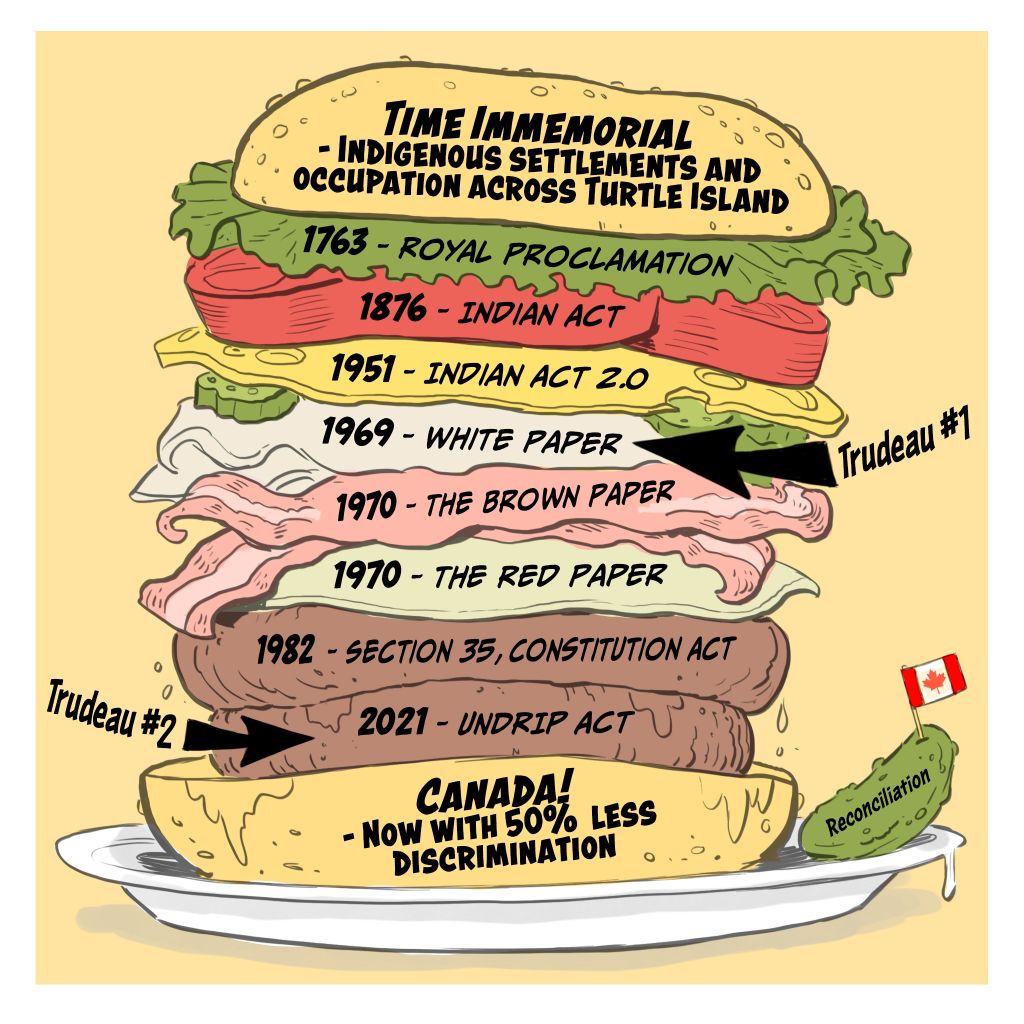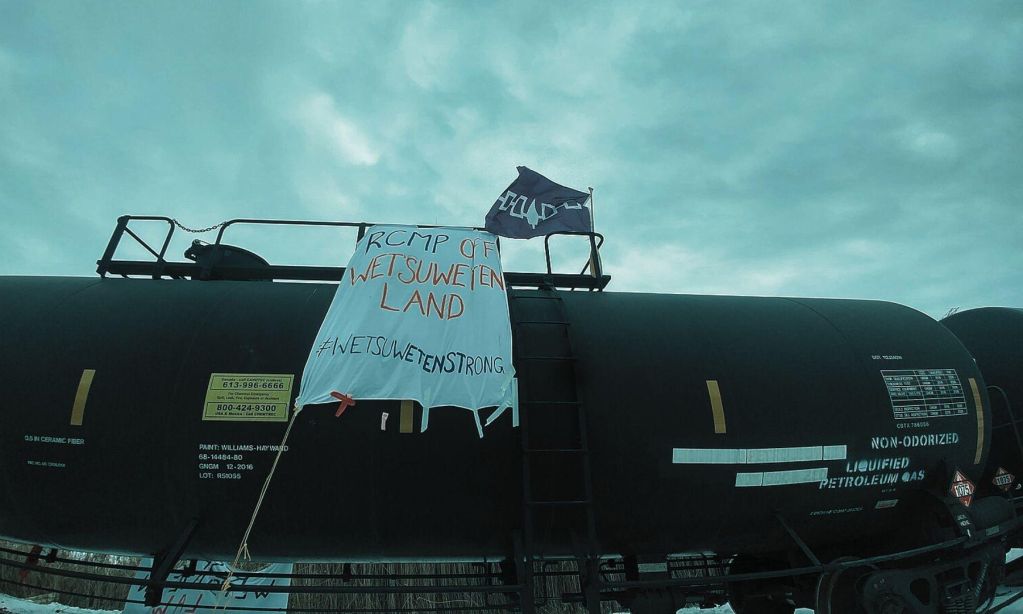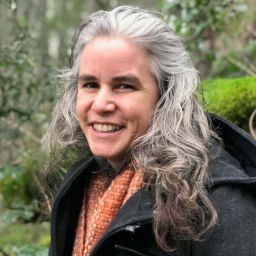Karyn Pugliese, member of Pikwakanagan First Nation, is a seasoned journalist best known for hard-hitting reporting at the National Observer, Canadaland, and APTN. So it’s refreshing to hear her delighted cackle as she unpacks some of the absurdities that are baked into Canadian law.
In Canada’s historical narrative of the march from British colony to nation,, says Pugliese, “First Nations are there when it's part of the Nation building, like the fur trade. And then we disappear until 1982, when all of the sudden we show up asking for our rights.”
In Canada, we have a convenient tendency to skip over the “truth” part in our haste to reconcile, already. However, we can’t repair our relationships until we understand the beliefs and systems that got us here—biases that continue to prevent healing and progress.
“What were we doing when we're not in the history books? A lot of things. Often trying to sue Canada,” says Pugliese.
Since the federal government lifted the ban on Indigenous Nations hiring lawyers or practising law with amendments to the Indian Act in the 1950s, Indigenous Nations have been on a winning streak in the country's courts. Those victories have placed millions of hectares of land under Indigenous jurisdiction, stopped unwanted pipelines and open pit mining projects, and steadily advanced indigenous sovereignty over lands and waters.

Aimed to spark kitchen table conversations about Indigenous justice and reconciliation, Home on Native Land deploys humour to help diffuse tension, while providing helpful metaphors to detail some of the injustices—and possibilities—wrapped up in policy frameworks in Canada.
Implementing UNDRIP: It’s about time
Formatted around a series of conversations with leading Indigenous thinkers, lawyers and activists like John Borrows, Glen Coulthard, and Terri Lynn Williams Davidson, the course is designed to help people get to the root of complex policy conversations. For instance, Lesson 8, UNDRIP: A Declaration of Interdependence, covers the basics of how United Nation Declaration of Rights of Indigenous Peoples (UNDRIP) came to be, and takes measure of evolving federal and provincial laws aiming to bring existing legislation in line with the declaration.
As province after province pass ‘UNDRIP implementation’ acts, and the federal government enacts Bill C-15, it’s helpful to hear Indigenous perspectives on how UNDRIP came to be, and the importance of maintaining Free, Prior and Informed Consent as the foundation of new legislation.
While critics of implementing UNDRIP are concerned with a perceived possibility of a First Nations, Inuit, and Métis “veto” power over proposed projects, Home on Native Land provides an Indigenous perspective of what’s already missing from the declaration—and what must survive as it passes into law.
A lot can be lost in translation, says Kukpi7 Judy Wilson, former Neskonlith Band Chief and former Secretary Treasurer of the Union of British Columbia Indian Chiefs.
“The (UNDRIP) writings were penned by many of our Indigenous People across Turtle Island, North America, including my cousin Chief Arthur Manuel,” Wilson says. “I think the main thing that survived… intact and never changed was our self-determination. He said, ‘article three, self-determination, is the antidote for the colonial Doctrine of Discovery.’ He also identified Free, Prior and Informed Consent. I think that’s the mechanism in the UN declaration that’s really important to Indigenous People—but the state mechanisms really struggle with it.”
Wilson outlines, in plain language, what the declaration does and does not do. While it does not provide new laws or rights, it does clarify the rights of self-determination, the right to equality, the right to be free of discrimination, and the right to culture; and outlines the concept of Free, Prior and Informed Consent (FPIC) as a fundamental right held by Indigenous Peoples, allowing them to give or withhold consent to a project that may affect them or their territories.
As the Canadian state rolls out legal frameworks to ostensibly encompass these goals, Wilson expresses frustration. “Our land is intact, our laws are intact, our governance is intact, and our jurisdiction is still intact over these lands. It’s almost like we’ve exhausted a lot of the remedies available in Canada because they keep trying to narrow them and have it controlled by the state government, which they’re not supposed to be doing.” According to Wilson, the implementation Acts still need to be based on the full declaration, not cherry-picked pieces that fail to embrace the full intent of UNDRIP.
"We've had some in-roads if you will, but we have a lot more work to do to be able to ensure that our leaders are respected and are at the table with full decision-making, and that we have Free, Prior and Informed consent and self-determination for our Nations.”
Three Wishes for Sovereignty & Solidarity
Wilson has three wishes when it comes to the future of her late cousin Art Manuel’s sweeping vision.
“First of all, there would be the recognition, the full implementation of our Indigenous laws, jurisdiction, legal orders.”
Next: “Our peoples as sovereign nations will be at those decision-making tables.”
“And thirdly, that we’ll have a better government structure that will take the care and well-being of all people into consideration—not just the one per cent and state government that currently make unilateral decisions over all of us.”
Wilson emphasizes that both the Canadian courts, and a close reading of history, show that Indigenous Nations are not a level of government underneath federal or provincial frameworks but are sovereign Nations, holding rights and keeping their own laws. Learning that history and understanding those legal frameworks is integral to the project of reconciliation.
“Are we just going to keep going to court until time immemorial? For as long as the grass grows, the river flows, and the sun shines?” asks Pugliese. In telling Canada its own story as it relates to the constitutional rights of Indigenous People, Home on Native Land gives glimpses of ways forward. “It is just telling the truth: help fill in those gaps, describe when the system's broken, when it ain't working as advertised, what the problem is.”
But Pugliese also sees a glimmer of possibility. Especially given that reconciliation is defined as ‘the act of making two things consistent with each other’.
“Reconciliation is hope. It's a word that we now have. All these other non-native reporters would come up to me and say, what is that Indians want anyway? And I was like, well, I don't know. There's housing and water and control over land and self-government. Now we’ve got one word for it: RECONCILIATION. All caps, all of it.”
Wilson echoes that vision. "I see a lot of young, strong leaders coming up and, look out! They understand we have to take care of the climate, we have to take care of the water and the salmon, and they know we have to change what we are doing. It's not just for Indigenous people, it's for all of our people to survive because the climate crisis is here. We have to be better instead of being reactionary, and that means we have to work together… so, that gives me hope."







